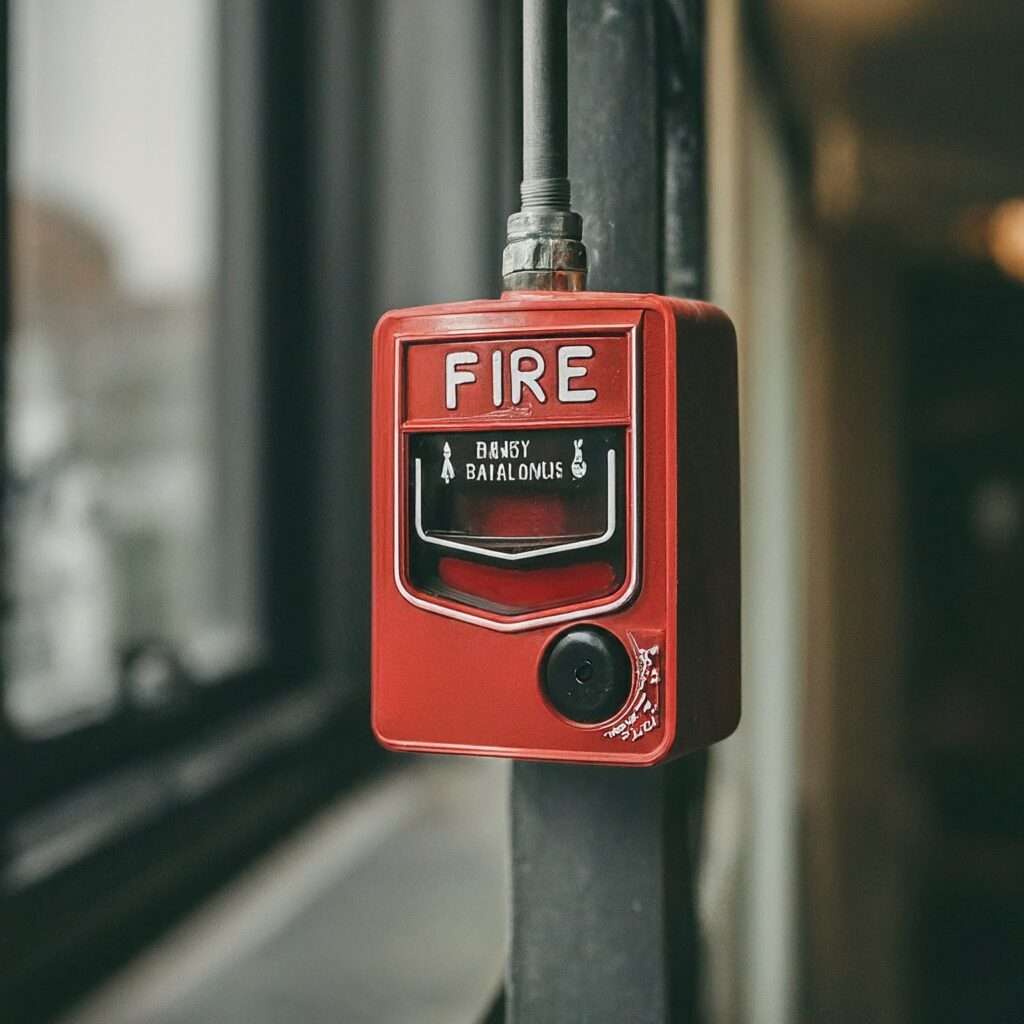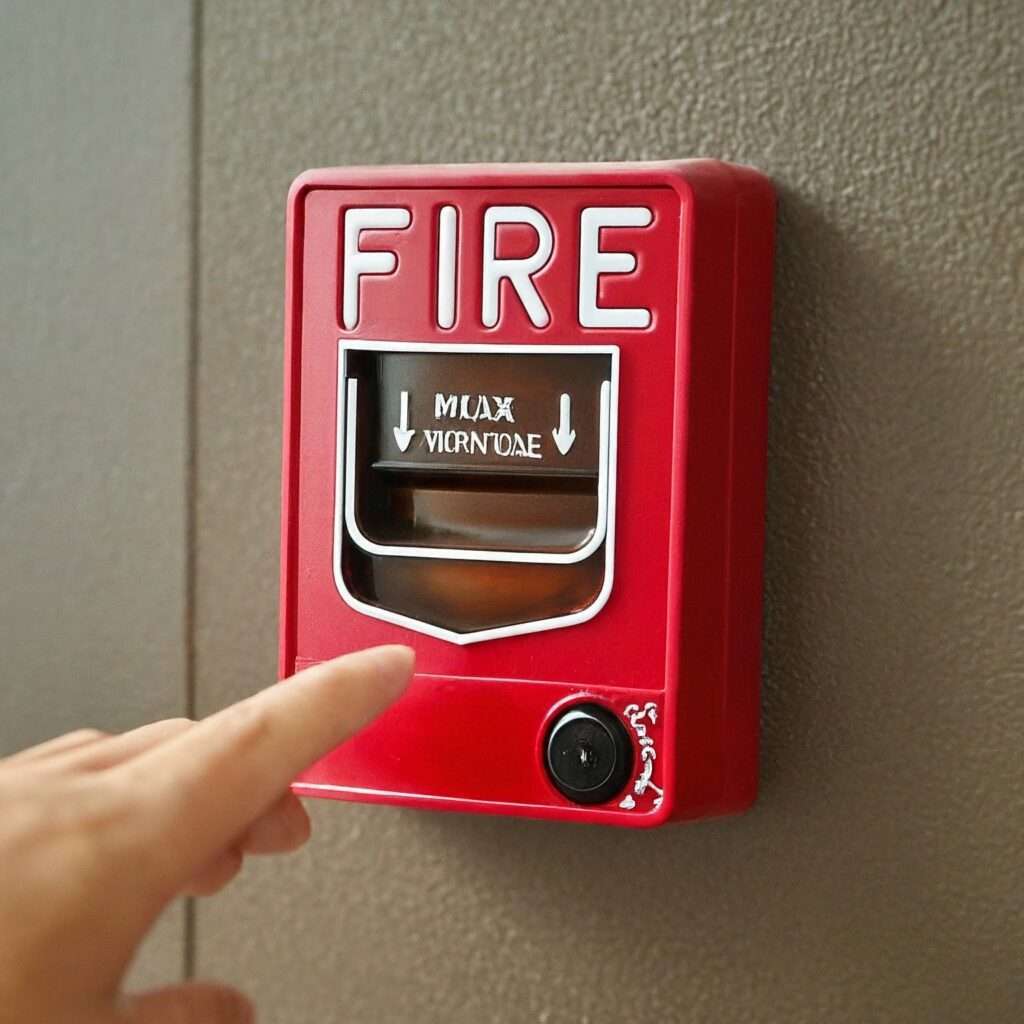Manual Call Points, often abbreviated as MCP, are pivotal elements in fire detection systems. These devices allow individuals to manually trigger fire alarms in the event of a fire, making them an indispensable part of any comprehensive fire safety plan. From understanding their function to knowing where they should be located and how often they should be tested, this article will cover everything you need to know about MCPs.
What is an MCP Fire Alarm?
An MCP fire alarm is a red, easily identifiable box mounted on a wall throughout a building. It allows anyone to manually trigger the fire alarm system in case of a fire, even if automatic detection fails.
Why Are MCPs Important?
- Human Detection: Fires can smolder for some time before triggering automatic sensors. An MCP empowers people to sound the alarm immediately upon noticing smoke or flames.
- Backup System: In rare cases, automated fire alarms malfunction. MCPs provide a reliable backup to ensure occupants are alerted promptly.
- Psychological Impact: The loud, distinct sound of a fire alarm serves as a strong psychological cue to evacuate. An MCP’s immediate activation can encourage faster building clearance.
Functionality of Manual Call Points
Imagine a fire erupting in your building. Smoke fills the air, but the automated alarm stays silent. In that critical moment, a Manual Call Point (MCP) becomes your hero.
MCPs are those red boxes mounted on walls throughout buildings. They’re more than just fire alarms – they’re lifesavers. Here’s how MCPs empower you to take charge in a fire emergency:
- Sound the Alarm Instantly: Forget waiting for beeps and flashing lights. An MCP lets you trigger the fire alarm with a simple push or pull, alerting everyone in the building immediately.
- Evacuate Quickly: The piercing alarm from an MCP is a clear signal to evacuate. Don’t waste time – head for the exits calmly but swiftly.
- Backup for Automated Systems: Technology isn’t perfect. If the automated fire detection system fails, an MCP ensures the alarm still sounds, giving everyone a fighting chance.
- Pinpoint the Fire: When you activate an MCP, it tells the fire alarm control panel where the fire is located. This helps firefighters prioritize their response and save precious time.
- Summon the Fire Brigade (Optional): Some MCPs can directly notify the fire department, expediting their arrival. Every second counts in a fire, and an MCP can make all the difference.
- Clear the Air (Optional): Certain MCPs can activate a smoke management system, which helps control the spread of smoke and improve visibility during evacuation.
Breaking the Glass Myth: Not all MCPs require breaking glass. Newer models use a push button or pull lever behind a clear or red plastic cover – safer and less prone to vandalism.
Placement of Manual Call Points

Manual call points are typically located along escape routes, near fire exits, so that you can trigger the alarm without slowing down the evacuation process or putting yourself at unnecessary risk. According to regulatory requirements (BS 5839), call points should be placed:
- On each floor of a building
- No more than 30 metres from any point in the building
- Not higher than 1.4 metres from the floor
- In a visible and accessible location
- Additionally, in areas identified as high-risk
These devices should always be installed on the floor side of an exit door leading to a staircase. This placement ensures that when the alarm is triggered, the alarm system can correctly identify which floor the fire has occurred on.
How to Identifying Manual Call Points?
Ever wondered what those colored boxes on the wall marked “Break Glass” or “Fire Alarm” mean? Those are Manual Call Points (MCPs), and their color actually tells you their specific job! Here’s a breakdown to keep you safe

Fire Alarm Hero: The Classic Red MCP
The most common MCP is the bright red one.exclamation This is your go-to fire alarm activator. When you activate a red MCP, it does three crucial things:
- Sounds the Alarm: A loud, unmistakable siren blares throughout the building, alerting everyone to a potential fire.
- Calls for Help (Optional): Some red MCPs can directly notify the fire department, saving precious time.expand_more
- Engages Building Systems (Optional): Depending on the system, activating a red MCP might trigger sprinklers or smoke control measures.expand_more
Green MCP: Your Exit Buddy
Look for green MCPs near emergency exits These don’t trigger the fire alarm, but they can be lifesavers during an evacuation:
- Door Release: A green MCP might unlock a specific door, allowing for a smoother and faster exit during an emergency
White MCP: Understanding the Signs
White MCPs are a bit more versatile. They don’t have a universal function, so there should be clear signage next to them explaining their specific purpose Here are some common examples:
- Lift Call: Might activate an elevator for disabled individuals during an evacuation.exclamation
- Smoke Control Activation: Could trigger the building’s smoke control system to improve visibility during escape.
Remember: White MCPs never call the fire department Always rely on red MCPs for that critical function
How to Use an MCP Fire Alarm

- Break the Glass (if applicable): Some MCPs have a clear or red plastic cover protecting a button or lever. Firmly break the glass with your elbow or a closed fist.
- Activate the Alarm: Press the button or pull down the lever firmly and continuously.The whole building will ring with the sound of the fire alarm.
- Evacuate Immediately: Once activated, follow your building’s fire evacuation plan and exit the building quickly and calmly.
Testing of Manual Call Points
Manual call points should be tested as part of your weekly fire alarm test procedure. Not all fire alarm call points can be tested each week, so testing is usually done via a rotation plan where a different call point is tested each week.
In addition to weekly testing, the entire fire alarm system should undergo a full safety inspection by a qualified fire safety engineer at least every six months. During these inspections, all manual call points will be thoroughly checked as part of regular maintenance.
FAQ about Manual Call Points
Here are some common questions about manual call points:
- What does the fire call point serve as? By pressing a button or pulling a lever, anyone can activate a building’s fire detection system through a manual fire call point..
- When should a manual call point be activated? If you notice a fire in a building before the fire alarm system has been activated, you should trigger the alarm manually by using the nearest red manual call point.
- How do fire alarm call points work? When you activate the manual call point, it sends a signal to the fire system’s control panel, notifying it that there is a fire in the area closest to the call point. This will at least sound the fire alarm throughout the building and should also start the fire emergency protocols, including calling the fire brigade.
- How many fire call points do I need? As a general rule, you must have a call point within 30 metres of any location within a building, and there should be at least one on each storey. It could be necessary to build more call points in high-risk locations.
- What color are the call points that enable you to raise the fire alarm? The red call spots are where you can set off the fire alarm.
- Where do manual call points go? Usually, they are located close to the fire exit at a 1.4m height to make sure that they are easily accessible to everyone, including wheelchair users.
- Do manual call points need signage? Yes, it’s a legal requirement to have the appropriate signage indicating a call point (as described in the Regulatory Reform (Fire) Safety Order 2005).
Here’s a more impactful conclusion that emphasizes action:
Don’t Wait for the Beep: Be a Fire Safety Hero with MCPs
Manual Call Points (MCPs) are more than just red boxes on the wall – they’re lifesavers. By understanding their colors and functions, you can take charge in a fire emergency.
Empower Yourself: Familiarize yourself with MCP locations in your workplace and residence. Knowing where they are and how to use them can be the difference between a slow response and a swift evacuation.
Regular Maintenance is Key: Regular testing and maintenance of MCPs ensure they function flawlessly when needed. Don’t hesitate to report any damaged or malfunctioning MCPs to the appropriate authorities.
Remember: In a fire, every second counts. Be informed, take action, and become a fire safety hero with the power of MCPs!


